Tami Golliday of Bexley High School attended last summer’s Science of Food and Fuel workshop, sponsored by USDA National Institute of Food and Agriculture, in Springfield, Ohio. She used the Make biodiesel from soybeans lesson with her AP Chemistry class.
“My students synthesized biodiesel using corn oil, soybean oil, and Plenish Oil. They were going to compare the results of each oil, but unfortunately, we had absences for one group, and another group had a spill. However, they really enjoy creating a fuel that they have learned about in so many classes,” Golliday said.
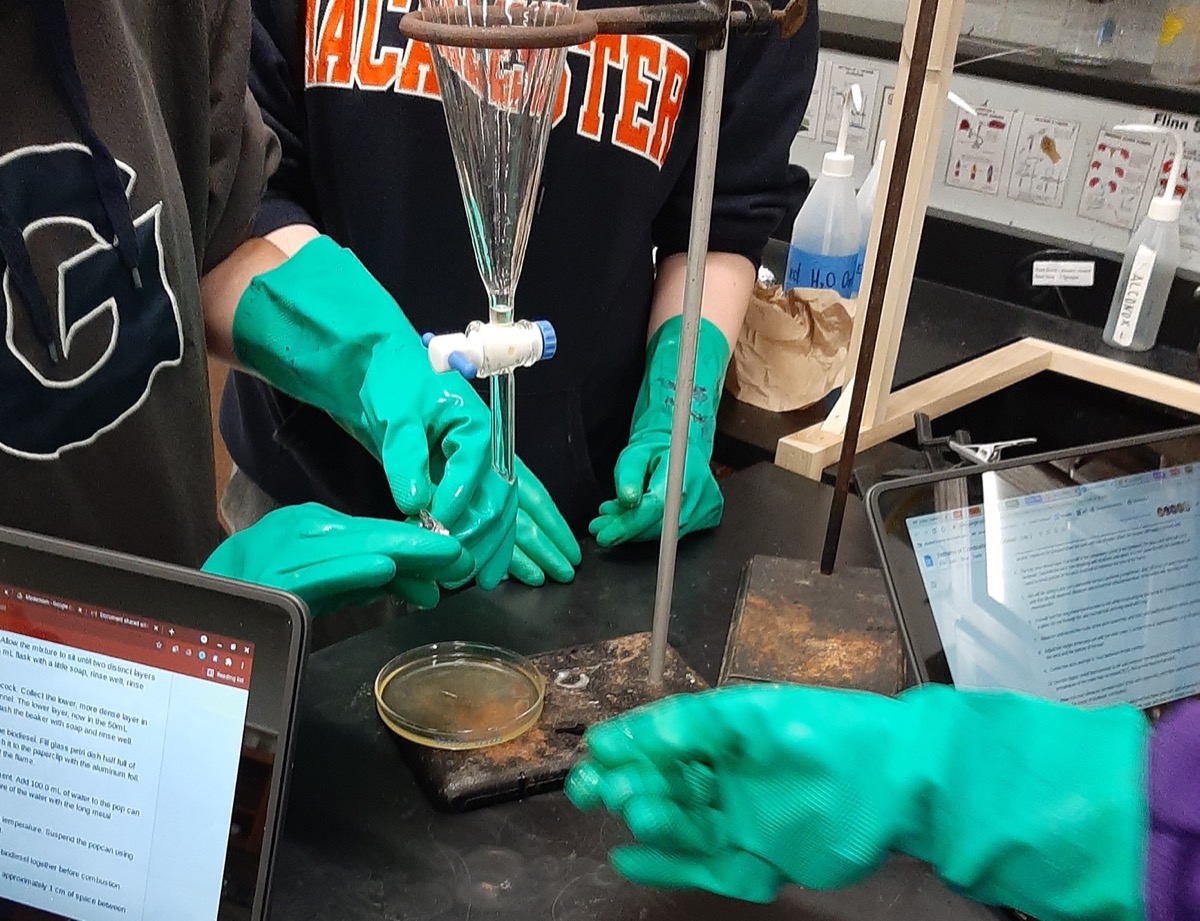
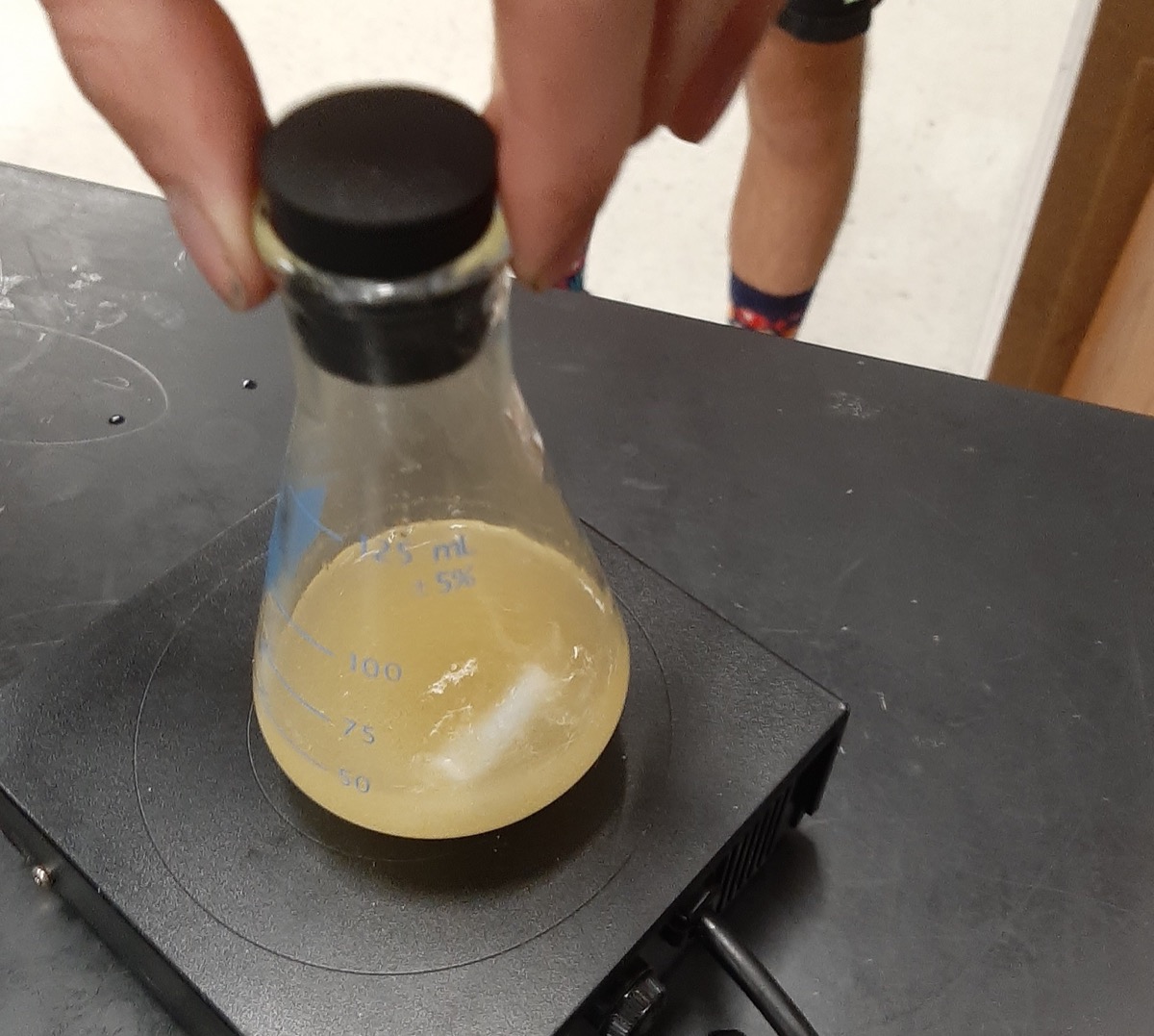
“My group modified the activity as taught in the workshop slightly. We did not use the putt-putt boats; instead we quantified the kJ/g for each biodiesel sample. We used glass petri dishes to hold the biodiesel product. Students made a “wick” using a piece of cotton string, aluminum foil, and a paperclip. They measured the mass of the assembly pre- and post-experiment.
“We used pop can calorimetry as part of our experiment: 100.0 g of water is added to a pop can which is then suspended above the burning biodiesel and the temperature change is measured. The specific heat of water is used to calculate the energy using the q=mc(Tf-Ti). The energy is then converted to kJ and divided by the change in mass of the biodiesel that was combusted.”

Students are easily able to distinguish the difference between energy for a single reaction versus energy for 1g (or 1 mole) of the reaction. The latter can be used to make predictions for additional reactions.
“The highlight of this workshop, for me, was the ability to work with other passionate educators to learn how the materials we use in our daily lives connect to the classroom content we expect our students to learn, understand, and apply,” Golliday said.
Follow GrowNextGen on social media to keep up with all the current workshops and opportunities!
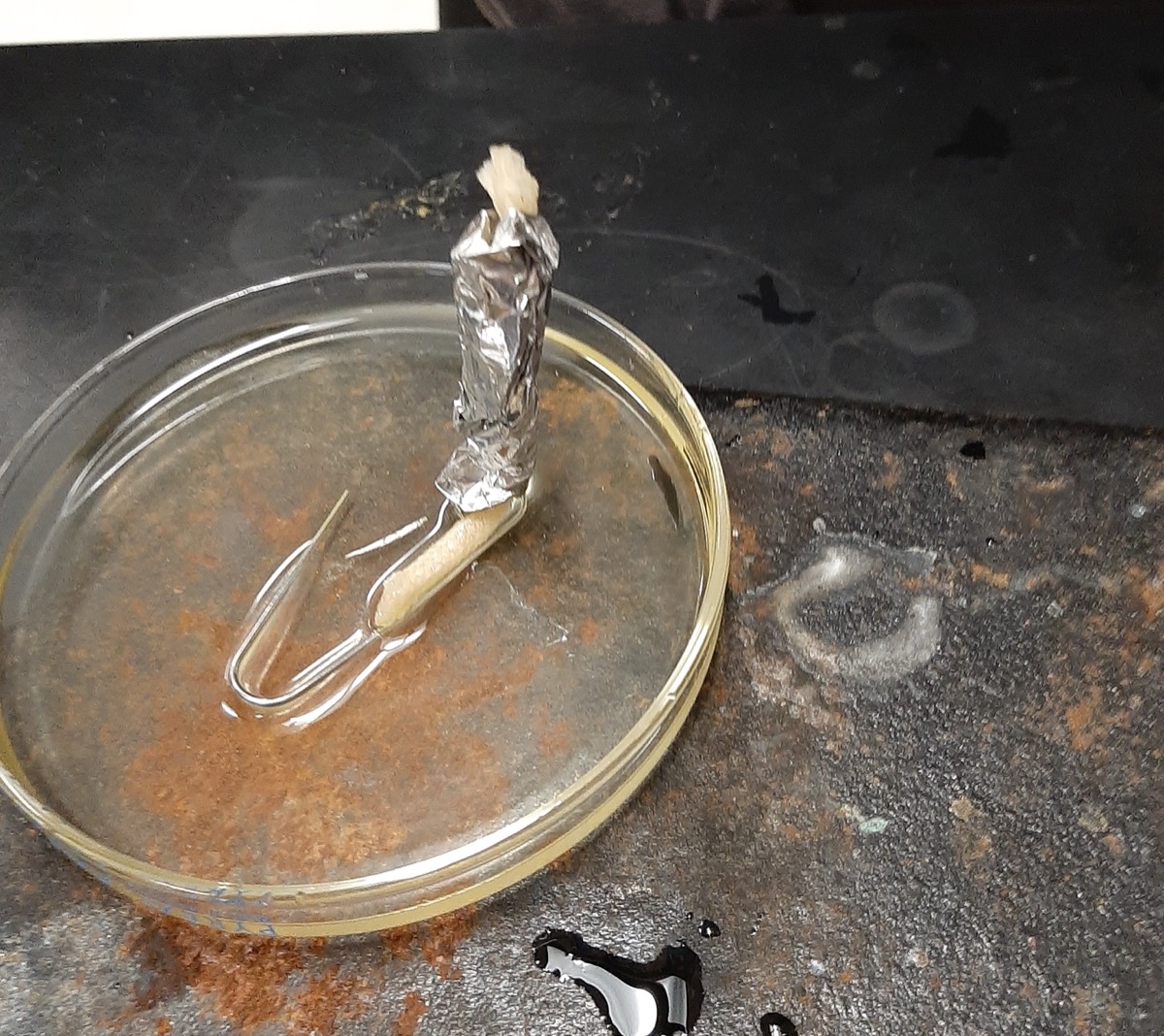
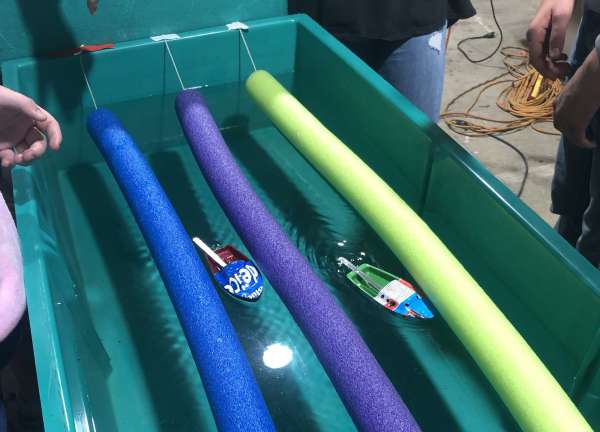
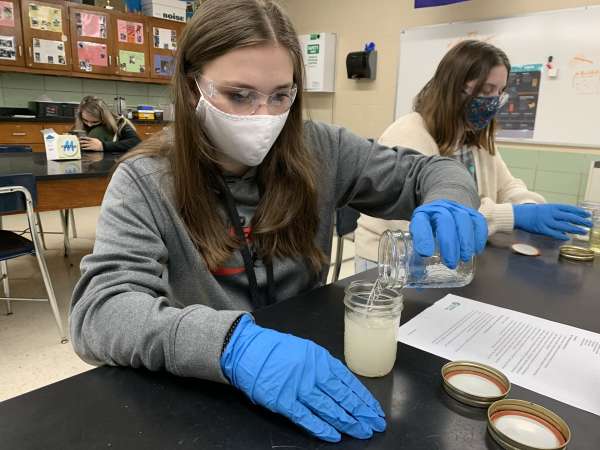
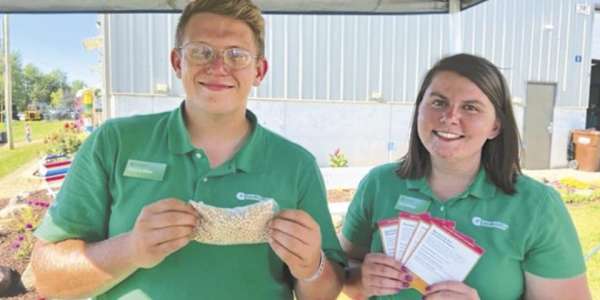
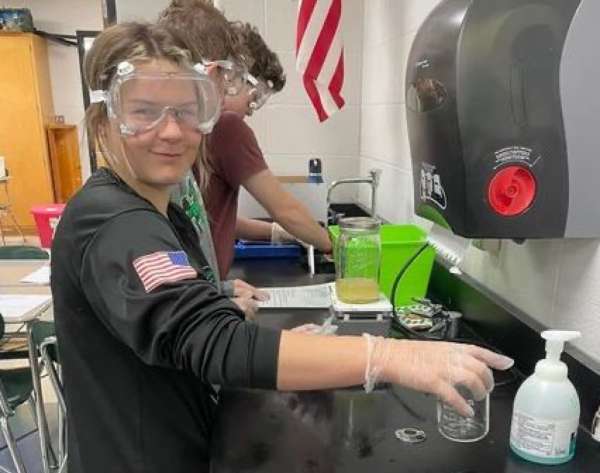
Share this